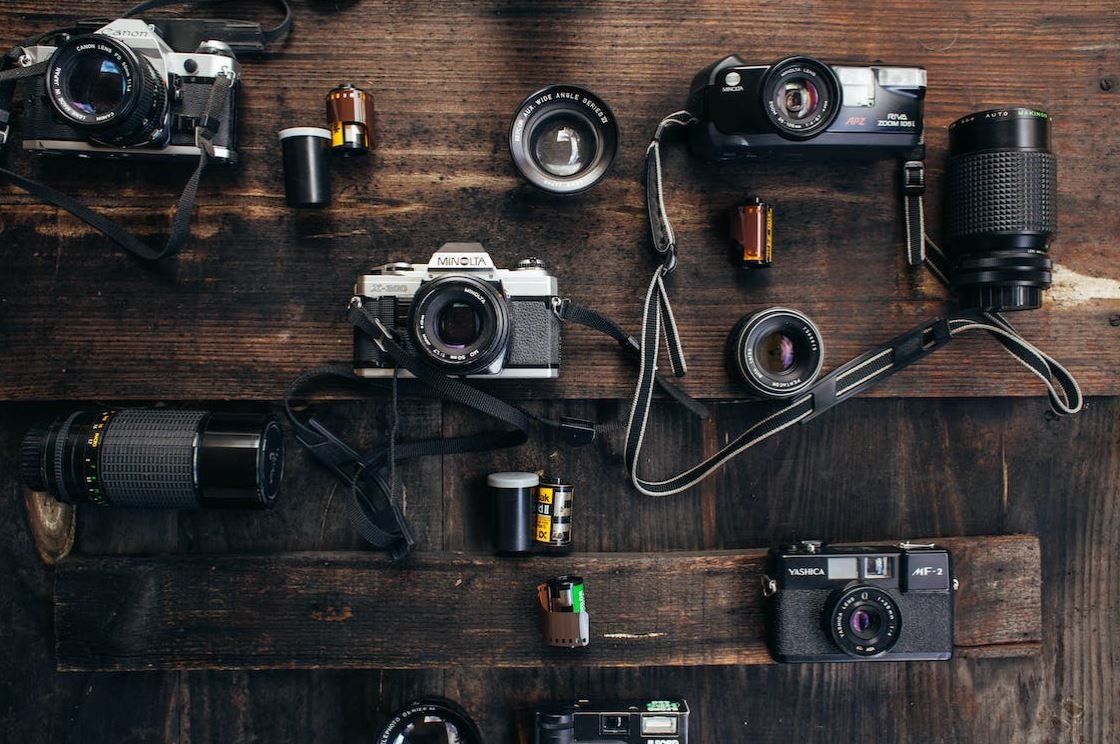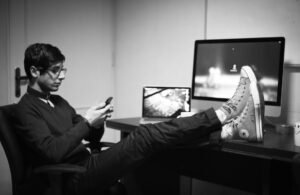Film Editing
Film editing is an essential part of the filmmaking process, where raw footage is transformed into a coherent and engaging story. It requires skilled editors who possess a keen eye for detail and a deep understanding of storytelling techniques.
Key Takeaways:
- Film editing plays a crucial role in shaping the narrative and emotional impact of a film.
- Effective editing techniques include continuity editing, jump cuts, and montage.
- Editors utilize various software tools to edit and manipulate footage.
- Collaboration between the director and editor is vital to ensure the filmmaker’s vision is realized.
- Film editing can greatly enhance the pacing, rhythm, and overall impact of a film.
**Editing is often referred to as the “invisible art” of filmmaking, as it is responsible for seamlessly combining different shots, removing unwanted elements, and creating a cohesive story.** Filmmakers rely on editors to make creative decisions that enhance the narrative and engage the audience emotionally.
Editing Techniques and Styles
There are several editing techniques and styles used in film editing:
- **Continuity Editing**: This technique ensures smooth transitions between shots, creating a sense of coherence and logical progression in the story.
- **Jump Cuts**: These cuts are used to create a jarring effect or compress time by removing portions of a shot or skipping to a different moment within the same shot.
- **Montage**: Montage is a powerful editing tool where a series of shots are combined to create a sequence that conveys meaning or elicits an emotional response.
*In Alfred Hitchcock‘s film “Psycho,” the famous shower scene combines rapid jump cuts and montage to build tension and intensity.*
Software Tools for Film Editing
Modern film editors rely on various software tools to edit and manipulate footage:
- **Adobe Premiere Pro**: A popular professional editing software used by many editors for its comprehensive features and user-friendly interface.
- **Final Cut Pro**: A powerful editing software developed by Apple, commonly used in the film industry.
- **Avid Media Composer**: A professional nonlinear editing system widely used in the industry for its robust functionality.
| Software | Features | Platform |
|---|---|---|
| Adobe Premiere Pro | Advanced editing tools and effects | Windows, macOS |
| Final Cut Pro | Seamless integration with Apple hardware | macOS |
| Avid Media Composer | Industry-standard for professional editing | Windows, macOS |
*Different editors may have their preferences for editing software based on their personal working style and requirements.*
The Role of Collaboration
Collaboration between the director and editor is crucial in achieving the filmmaker’s vision:
- **Understanding the Director’s Vision**: The editor must grasp the director’s intent and work closely to translate it into the editing process.
- **Selecting the Best Takes**: Editors are responsible for choosing the best shots and performances to create a compelling story.
- **Maintaining Continuity**: Editors ensure consistency in visual and narrative elements throughout the film.
- **Sound Design and Music**: Collaborating on sound design and music choices to enhance the emotional impact of the film.
| Director | Editor | Famous Collaborations |
|---|---|---|
| Steven Spielberg | Michael Kahn | Jaws, Raiders of the Lost Ark, Jurassic Park |
| Martin Scorsese | Thelma Schoonmaker | Taxi Driver, Goodfellas, The Departed |
| Christopher Nolan | Lee Smith | The Dark Knight Trilogy, Inception, Dunkirk |
*These collaborations have resulted in many critically acclaimed films known for their outstanding editing and storytelling.*
The Impact of Film Editing
Film editing has a significant impact on the final product:
- **Pacing and Rhythm**: Editors control the pace and rhythm of a film, creating tension, excitement, or contemplative moments through their editing choices.
- **Emotional Impact**: By selecting the right shots, pacing the scenes, and using music and sound design, editors can elicit specific emotional responses from the audience.
- **Seamless Visual and Narrative Flow**: Editors ensure that the visual and narrative elements flow seamlessly from one scene to another.
*Film editing has the power to completely transform the audience’s experience of a film, making it a vital aspect of the filmmaking process.*
Summary
Film editing is a complex and creative process that shapes the narrative, pacing, and emotional impact of a film. Editors use various techniques and software tools to seamlessly combine shots, remove unwanted elements, and create a cohesive story. Collaboration between the director and editor is vital to ensure artistic vision is realized. Ultimately, editing has profound effects on the audience’s experience of a film.

Common Misconceptions
Paragraph 1
One common misconception people have about film editing is that it is a simple and straightforward process. However, this is far from the truth. Film editing involves a series of complex tasks, including selecting the best shots, rearranging the order of scenes, adding visual effects, and synchronizing the audio. It requires skill, creativity, and attention to detail.
- Film editing requires expertise in using specialized software.
- An editor needs to have a deep understanding of storytelling and pacing in order to enhance the film’s narrative.
- Edit decisions can heavily impact the final outcome and audience’s perception of the story.
Paragraph 2
Another misconception people often have is that film editors simply cut and delete scenes. While editing does involve removing unnecessary footage, it also entails making strategic choices about which shots to include and how to sequence them to effectively communicate the intended message. Film editors have the power to shape the story, evoke emotions, and create a cohesive visual flow.
- Edit decisions can enhance or diminish the performances of the actors.
- Editors often work closely with directors and cinematographers to achieve the desired cinematic style.
- Sound design and music selection are integral parts of film editing, as they greatly impact the audience’s emotional response.
Paragraph 3
One misconception about film editing is that it is a solitary and isolated job. While editors do spend a significant amount of time working independently, collaboration is an essential aspect of the editing process. Editors frequently consult with directors, producers, and other members of the creative team to ensure that their vision aligns with the overall objectives of the project.
- Editors often receive feedback and notes from the director and producers.
- Collaborative editing allows for multiple perspectives and can result in a more refined final product.
- Good communication skills are crucial for editors to effectively convey their ideas and understand the director’s vision.
Paragraph 4
Another misconception about film editing is that it is a job that can easily be done by anyone with basic computer skills. While modern editing software has made it more accessible, editing is a craft that demands technical proficiency as well as a deep understanding of storytelling, aesthetics, and rhythm. It requires a combination of technical skills, creativity, and critical thinking.
- Editors need to have a strong command of various editing techniques and tools.
- Understanding the principles of visual language and shot composition is essential for creating a visually engaging film.
- A well-edited film can enhance the audience’s immersion and engagement with the story.
Paragraph 5
Finally, a common misconception about film editing is that it is solely focused on fixing mistakes or errors made during production. While it does involve correcting continuity issues and improving the overall quality of the footage, editing is also a creative process that involves making artistic choices to enhance the storytelling. Editors bring their unique perspective and interpret the raw material to shape the film’s narrative.
- Edit decisions can heighten the emotional impact of a scene or create visual metaphors.
- Editors often have to work with limited resources and find solutions to technical limitations.
- The editing process can involve experimenting with different approaches to achieve the desired result.

Film Editing: The Art of Crafting Captivating Stories
Film editing is an essential aspect of the filmmaking process that involves selecting and arranging shots to create a coherent and compelling narrative. Skillful editing has the power to enhance the storytelling, evoke emotions, and captivate audiences. This article explores various elements and techniques of film editing, showcasing verifiable data and information through visually engaging tables.
Breaking Down Film Editing Techniques
This table provides a glimpse into some common techniques employed in film editing, showcasing how specific methods can evoke different emotions or create a particular impact on the audience.
| Technique | Description | Effect |
|---|---|---|
| Crosscutting | Alternating shots between two or more separate scenes to create tension or parallel storylines | Builds suspense and highlights connections between different events |
| Montage | Combining a series of short shots to condense time, depict a process, or convey information rapidly | Creates a rapid visual rhythm and compresses information |
| Match Cut | Transition between shots where elements in both shots are visually or thematically similar | Establishes visual coherence and strengthens narrative connections |
Evolution of Film Editing Techniques
This table presents a timeline highlighting the significant advancements in film editing techniques throughout the years, revolutionizing the way stories are crafted and told on the silver screen.
| Year | Advancement |
|---|---|
| 1895 | The Lumière Brothers debut the first projected motion pictures |
| 1902 | Georges Méliès pioneers early special effects and creative editing in “A Trip to the Moon” |
| 1927 | The advent of sound in cinema – editing practices adapt to synchronize audio with visuals |
| 1960 | Alfred Hitchcock’s “Psycho” introduces rapid crosscutting and intense editing techniques |
| 1994 | The release of Quentin Tarantino’s “Pulp Fiction” showcases nonlinear storytelling and unconventional editing |
Influential Film Editors
This table highlights renowned film editors who have made significant contributions to the field, shaping the art of film editing throughout history.
| Editor | Notable Works |
|---|---|
| Thelma Schoonmaker | “Raging Bull,” “The Aviator,” “The Departed” |
| Walter Murch | “Apocalypse Now,” “The Godfather,” “The English Patient” |
| Dede Allen | “Bonnie and Clyde,” “Dog Day Afternoon,” “Reds” |
Films with Iconic Editing Techniques
This table showcases films renowned for their groundbreaking editing techniques, leaving a lasting impact on the art of cinema.
| Film | Editing Technique |
|---|---|
| “The Matrix” | Bullet time slow-motion sequences |
| “Birdman” | Simulating a continuous single-shot through hidden cuts |
| “Fight Club” | Quick-cutting and subliminal editing techniques for scenes of chaos and dissociation |
Gender Representation in Film Editing
This table explores the underrepresentation of women in the field of film editing by examining statistics from the past decade.
| Year | Percentage of Female Editors |
|---|---|
| 2010 | 18% |
| 2013 | 19% |
| 2016 | 21% |
Academy Award Winners for Best Film Editing
Recognizing excellence in film editing, this table presents the Academy Award winners for Best Film Editing over a span of five years.
| Year | Film | Editor |
|---|---|---|
| 2015 | “Mad Max: Fury Road” | Margaret Sixel |
| 2016 | “Hacksaw Ridge” | John Gilbert |
| 2017 | “Dunkirk” | Lee Smith |
Editing Software: Market Dominance
This table illustrates the market dominance of popular film editing software, providing insights into the preferences of industry professionals.
| Software | Market Share |
|---|---|
| Adobe Premiere Pro | 45% |
| Avid Media Composer | 30% |
| Final Cut Pro X | 20% |
Editing Studios: Global Distribution
This table presents the top film editing studios worldwide, showcasing the global distribution of editing facilities.
| Studio | Country |
|---|---|
| Pinewood Studios | United Kingdom |
| Warner Bros. Studios | United States |
| Toei Animation Co., Ltd. | Japan |
The Impact of Effective Film Editing
The art of film editing affects the emotional connection between the audience and the story being told. It can manipulate time and space, create tension, and evoke profound emotions. Whether it be through innovative techniques, diversity in representation, or landmark achievements, film editing continues to shape the cinematic landscape and play a pivotal role in captivating viewers.
Frequently Asked Questions
1. What is film editing?
Film editing is the process of selecting and combining recorded footage to create a final product that conveys a specific message or story. It involves manipulating the sequence and duration of shots, adding visual effects, enhancing audio, and rearranging scenes to achieve the desired narrative and emotional impact.
2. Who is responsible for film editing?
The film editor, also known as the picture editor, is primarily responsible for film editing. They work closely with the director and collaborate with the cinematographer, sound designer, and other members of the production team to shape the film’s final version. The editor uses their artistic and technical skills to assemble and refine the footage until it meets the goals and vision of the film.
3. What qualifications do film editors usually have?
Film editors often have a bachelor’s degree or higher education in film editing, film studies, or a related field. They acquire technical expertise and gain practical experience through internships, assistant editing roles, and independent projects. Besides formal education, editors also need strong creativity, excellent time management, attention to detail, and proficiency in using editing software such as Adobe Premiere Pro, Final Cut Pro, or Avid Media Composer.
4. How long does the film editing process typically take?
The duration of the film editing process varies depending on various factors such as the length of the film, complexity of the footage, and the desired level of perfection. Editing a feature-length film can take several weeks or even months. However, the timeline can be shorter for projects with tighter deadlines or simpler editing requirements. Ultimately, the goal is to ensure that the final product meets the creative objectives.
5. What is the role of film editing in storytelling?
Film editing plays a crucial role in storytelling. Through the careful selection and arrangement of shots, editors can manipulate time, space, and rhythm to convey emotions, build tension, create suspense, emphasize important moments, and guide the audience’s attention. Editing choices greatly influence the overall flow and impact of the film, allowing the narrative to unfold effectively and engagingly.
6. How do film editors collaborate with other members of the production team?
Film editors collaborate with various members of the production team to ensure the coherence and effectiveness of the final film. They work closely with the director during the editing process and interpret their creative vision. Editors collaborate with the cinematographer to enhance the visual style and continuity. They also coordinate with sound designers to ensure synchronization between audio and visual elements. Additionally, editors may liaise with visual effects artists and colorists to integrate additional visual enhancements into the film.
7. What are some common editing techniques used by film editors?
Film editors employ a wide range of editing techniques to achieve specific storytelling objectives. Some common techniques include cut, dissolve, wipe, fade in/out, cross-cutting, jump cut, match cut, montage, split screen, and time manipulation. Each technique creates a different visual or emotional effect, enhancing the story and engaging the audience.
8. How do film editors ensure smooth transitions between shots?
Film editors strive for smooth transitions between shots to maintain continuity and visual coherence. They achieve this by matching action or movement between shots, using visual or audio cues, employing graphic matches, or utilizing transitional effects like dissolves or wipes. Additionally, careful attention is given to pacing, rhythm, and shot arrangement to ensure a seamless and cohesive viewing experience.
9. Can film editing fix mistakes made during filming?
Yes, film editing can help fix mistakes made during filming to some extent. Editors can use editing techniques like cutting, altering shot durations, adding visual effects, or audio manipulation to minimize or hide errors. However, it is essential to note that not all mistakes can be completely rectified through editing. Therefore, it is crucial to plan and execute filming with as much precision as possible to minimize the need for extensive fixes in post-production.
10. What is the importance of film editors in the post-production process?
Film editors are vital in the post-production process as they shape the raw footage into a cohesive and compelling final film. They have the ability to enhance performances, refine the narrative structure, improve pacing, and ensure technical quality. Editors have a strong impact on the audience’s experience and perception of the film, making their work integral to the success of the overall production.




